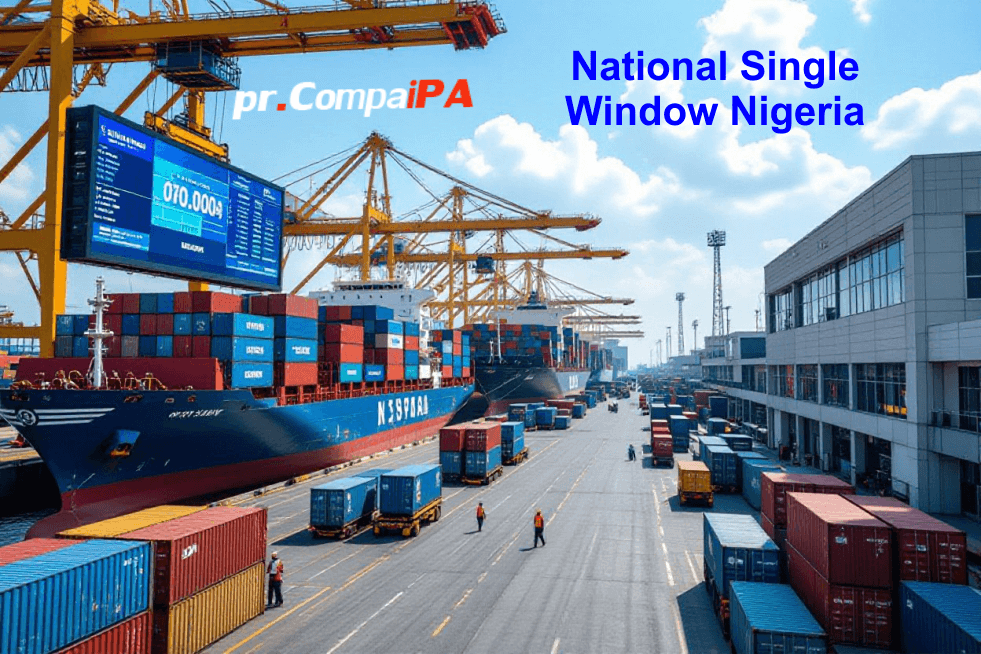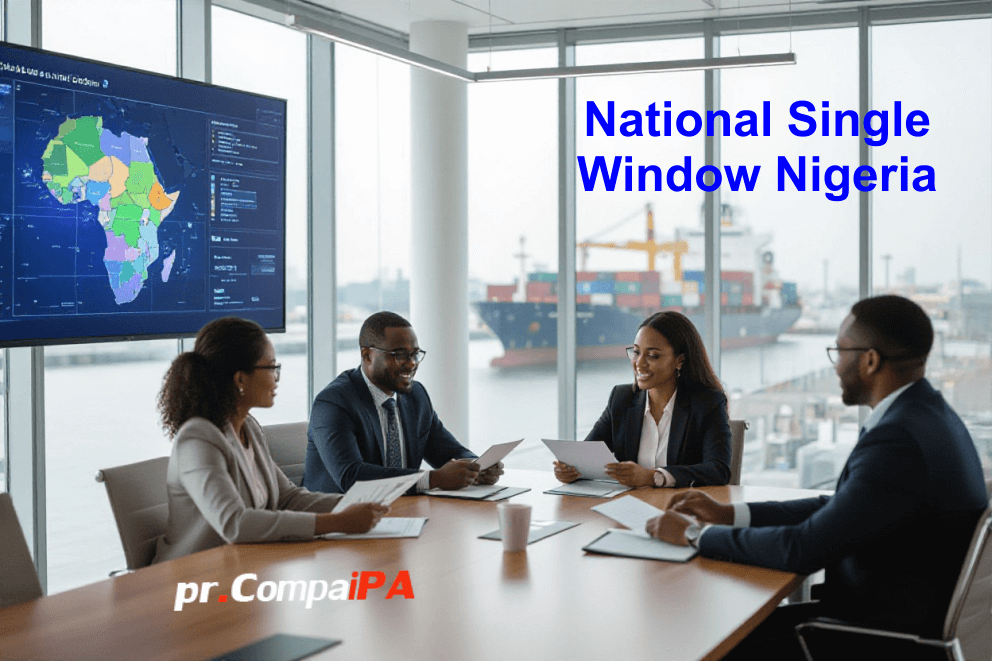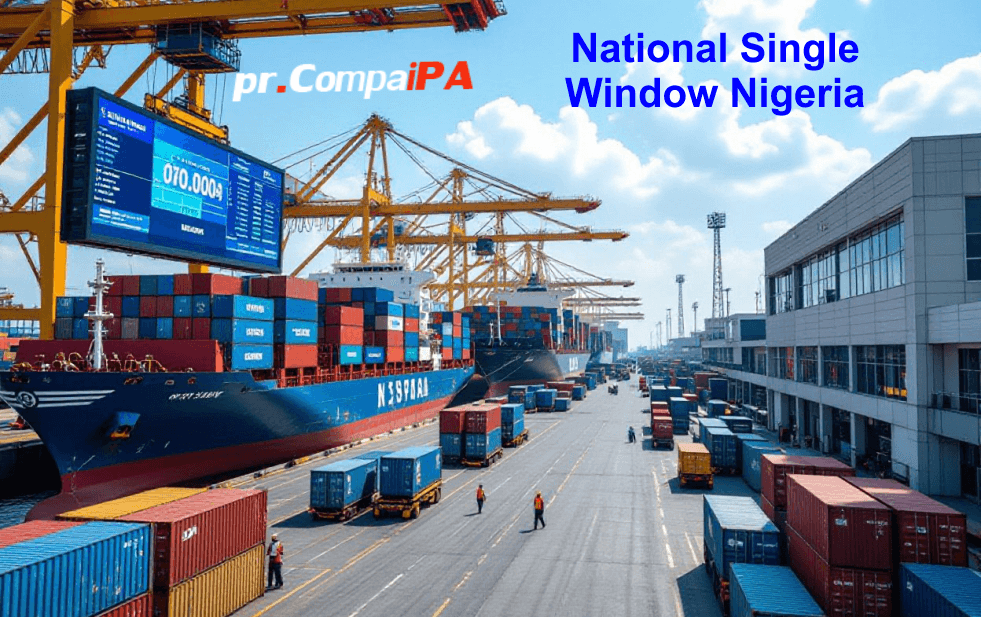National Single Window Nigeria: Testing Begins Ahead of March 2026 Launch
Trade in Nigeria is about to get a whole lot less chaotic for you, which might feel almost too good to be true if you’re used to juggling endless paperwork, conflicting portals, and slow approvals. With the National Single Window Nigeria now in testing with key government and private stakeholders, you’re watching the early steps of a unified digital trade system that aims to put all your cross-border processes in one place – and yes, it’s targeting full operation by March 2026, so your trade operations could be running faster, cleaner, and more transparent than you’ve ever seen.

Key Takeaways:
- Picture a freight forwarder in Apapa juggling 8 different portals just to clear one container – that headache is exactly what this new platform is trying to kill off, by pulling customs, ports, regulators, and trade agencies into one unified digital system for Nigeria.
- Testing has kicked off with major stakeholders like customs officials, terminal operators, banks, shipping companies, and government MDAs in the mix, so the system isn’t just being built in a vacuum; it’s being poked and stressed by the actual people who’ll use it daily.
- There’s a clear timeline on the table: the unified National Single Window Nigeria is working toward full operational status by March 2026, which gives roughly a year and a bit for pilots, debugging, onboarding, and fixing all the messy edge cases that always pop up in real trade flows.
- Trade processes that used to be buried in paper files and “come back tomorrow” queues are gradually shifting into a single digital front door, which should cut clearance times, reduce physical contact points, and help close a lot of the loopholes that leak revenue today.
- Because multiple agencies will plug into one platform, data can be shared in real time – that means fewer duplicate submissions for traders, better risk profiling for customs, and a cleaner audit trail if something smells off in a particular transaction.
- Private sector input during this testing phase is pretty central: freight forwarders, exporters, importers, and logistics firms are feeding back on workflows, user experience, and integration headaches so the final system actually matches how people trade, not just how policy documents imagine it.
- If things land as planned by March 2026, Nigeria positions itself for faster border processes, more competitive ports, improved trade stats visibility, and a friendlier environment for both local businesses and foreign investors who are tired of opaque, fragmented procedures.
What’s the Big Idea Behind the National Single Window Nigeria?
Plenty of people think the National Single Window Nigeria is just a fancy portal to upload documents, basically a prettier version of what you already do today. It isn’t. The big idea is that you only submit trade and cargo data once, and every relevant government agency – Customs, NPA, NIMASA, SON, NAFDAC, immigration, you name it – pulls what they need from that same trusted source. So instead of juggling 15 separate logins, 9 physical visits, and that one file that always goes missing right before vessel arrival, your workflows get stitched into a single, shared digital process that actually talks to itself.
What really changes for you is that the system is designed around your transaction, not around government silos. You file a pre-arrival declaration, and the Single Window can trigger risk assessment, port health checks, terminal notifications, and payment workflows in one flow, using the same dataset, with no re-typing and no re-uploading. And because the platform is built to meet WTO Trade Facilitation Agreement standards and align with what Singapore, Kenya, and Ghana already run, you’re basically plugging your operations into an ecosystem where automation, time stamps, audit trails, and API connections with your own ERP or TMS become normal, not “nice to have”.
Who’s Involved? Key Players in the Testing Phase
Government Agencies Putting The System Through Its Paces
Picture your container landing at Apapa and, instead of bouncing between customs, port health, and NAFDAC offices, every interaction is routed through one workflow – that scenario is exactly what Nigeria Customs Service, NPA, NIMASA, SON, NAFDAC, NEPC, and a handful of others are stress-testing right now. You’ve got over 20 core MDAs in the first testing cohort, but the heavy lifting is coming from the Nigeria Customs Service (validating declaration flows and risk profiling), Nigerian Ports Authority (trialing gate-in / gate-out automation), and NAFDAC + SON (verifying that permits and certificates sync cleanly as structured data, not just uploaded PDFs).
On the backend, the Federal Ministry of Finance and Federal Ministry of Trade & Investment are acting as policy referees, pushing MDAs to retire legacy forms and duplicate processes that keep clogging your transactions. Because this isn’t just about APIs talking to each other, the testing team is drilling into real bottlenecks: for example, they’re timing how long it takes for an HS code classification to move from a Customs decision into the trade statistics module, so your export data doesn’t show up 6 months late like it does today. If an agency’s workflow adds zero value but adds 2 days to clearance, it’s being flagged for redesign during this testing phase.
Private Sector, Tech Partners, And The People Actually Using It
On the private side, you’ve got freight forwarders at Tin Can and Onne literally sitting in front of test terminals, running dummy consignments through the system with real scenarios – partial shipments, split bills of lading, transshipment cargo, the messy stuff you actually deal with. Major shipping lines and terminal operators like APMT and Port & Cargo are feeding real operational data into sandbox environments so the system can simulate yard congestion, gate queues and vessel schedules instead of pretending everything moves in a straight line. When you hit “submit” on a declaration in the live environment one day, it’s these edge cases that will decide whether your cargo glides through or gets stuck in limbo.
On the tech side, a lead platform integrator is working with Nigerian software firms that know your on-ground headaches – for example, they’re integrating with banks’ trade portals so your Form M, PAAR, and duty payment all sync back into the Single Window without you retyping a single thing. Industry associations like ANLCA, NAGAFF, MAN, and key export clusters in Kano and Lagos are nominating power users to act as “test champions” for their members, feeding in bugs, confusing screens, and missing workflows. The target is simple and a bit ruthless: if you, as an everyday trader or agent, can’t complete an end-to-end test transaction in under 30 minutes by March 2026, the design team treats that as failure, not user error.

What’s Gonna Change? How This Affects Trade in Nigeria
Fewer Queues, Fewer Signatures, Faster Cargo
A lot of people quietly assume this will just be “same old process, but online,” and that nothing real will shift in your day-to-day. That would be a huge underestimate. With the National Single Window Nigeria, your customs, SON, NAFDAC, NESREA, immigration, port health, and terminal interactions all plug into one workflow. So instead of chasing six different desks for six different signatures, you submit once, track once, and the system routes your file to whoever needs to touch it.
In practical terms, if your container currently spends 18-21 days in port because you’re hopping between ASYCUDA, a terminal portal, some WhatsApp groups, and a few helpful “agents”, you’re looking at that dropping towards 7-10 days for compliant cargo once the system is fully live and stabilized. You’ll get time-stamped notifications on inspections, coding, releases, and holds, which means you can plan trucking and warehousing like a grown-up business instead of playing guesswork. And because the same dataset feeds multiple agencies, you cut down on double-entry errors that used to trigger random queries, penalties, and delays that had nothing to do with your actual goods.
Real Costs, Real Risks, Real Opportunities For You
Another common belief is that this is just a government control tool, so it only benefits regulators and maybe the big multinationals. In reality, the biggest shift hits your cost structure and your risk profile. With a unified digital trail, your “facilitation fees”, duplicate inspection charges, and document courier costs start shrinking, because each intervention is logged, timed, and visible to multiple parties. That makes it a lot harder for anyone to quietly invent a new clearance step just because you’re in a hurry and your vessel is already on demurrage.
Because everything is data-driven, your historical compliance record will matter way more than who you know at the port. Consistently accurate declarations, clean payment history, and proper classification can push you into the green lane or low-touch treatment, which means fewer physical inspections and faster release, shipment after shipment. On the flip side, if you’re used to under-invoicing, misclassification, or “fixing it at the port”, you’re going to feel the heat: risk engines will flag patterns across banks, shipping lines, manifest data, and declarations, so repeated games start showing up in red. That pressure cuts both ways, though – it also creates space for you to negotiate better freight and finance terms, because you can prove your performance with hard numbers from the National Single Window Nigeria, not just vibes and promises.
My Take on Why This Matters for Small Businesses
Real Cost Savings You Can Actually Feel
Over the past few years, you’ve probably seen more small exporters on Instagram and LinkedIn talking about shipping to multiple countries from their living room or a 2-room office – that trend only works if the backend trade systems stop punishing you for being small. With a properly working National Single Window Nigeria, you’re not paying an agent to walk files around five different agencies; you’re uploading once, tracking once, and cutting out half the nonsense that used to eat your margins. That matters when you’re moving, say, 2 containers a month, and every extra 50,000 to 100,000 naira in “processing” kills your profit. If the NSWN really trims 30 to 40 percent off average clearance times, which is what similar systems did in countries like Singapore and Kenya, you’re not just saving time – you’re unlocking extra working capital every single month.
Small importers feel it even more. Instead of stock sitting at port for 18 to 25 days while you juggle SON, NAFDAC, Customs, terminal operators, and your bank, you’re aiming for something closer to 7 to 10 days when all the agencies are actually talking to each other digitally. That gap is the difference between watching your capital rot in the port queue and flipping inventory fast enough to restock before your competitors do. And because the data trail is cleaner, your bank can see your trade history in a more structured way, which over time supports easier access to trade finance, invoice discounting, and even better FX allocation for those with consistent records. The small guys who get in early, learn the platform properly, and build digital records with it are the ones who’ll suddenly look “bankable” while others are still buried in paper.
Is March 2026 Really Gonna Happen?
Where The March 2026 Date Actually Comes From
Ever ask yourself why everyone keeps saying March 2026 like it’s carved in stone? You’re not wrong to be a bit skeptical. That date didn’t just fall from the sky – it sits in the implementation roadmap approved under the National Single Window Nigeria Masterplan, tied directly to the WTO Trade Facilitation Agreement commitments and Nigeria’s own customs modernisation timelines. You’re talking about a window of roughly 24-30 months from early pilot development to full nationwide rollout, which is aggressive for a system that’s supposed to connect over 40+ MDAs, 5 major seaports, multiple airports, land borders, and private sector platforms.
What gives the date some real weight is that testing has already started with priority users: freight forwarders at Apapa and Tin Can, a shortlist of terminal operators, selected banks, plus key agencies like NCS, NPA, NAFDAC, SON, and NIS. You also have funding commitments baked into the national budget cycle and tied to milestones – like “X” number of agencies integrated by Q4 2025, “Y” volume of declarations processed through the test environment over 6 months, and “Z” reduction in average clearance times from the current 18-21 days down towards that single-digit day target. Those aren’t just pretty PowerPoint slides – if those KPIs slip, the March 2026 promise starts to wobble.
What Could Push The Date – And What Might Actually Save It
On the risk side, you already know the usual suspects: legacy IT systems that don’t talk to anything, agencies guarding “their” data like it’s gold, and old manual procedures that people are weirdly attached to because they’ve built whole informal economies around them. If just 5 or 6 high-impact agencies miss their integration deadlines, you could easily see a scenario where March 2026 becomes “technical go-live” on paper, but you, as an actual trader or logistics operator, still can’t do fully end-to-end digital processing for most transactions. It becomes a half-baked hybrid that keeps you running back and forth between the portal and someone’s desk.
What might surprise you, though, is how much pressure is now coming from your own side – the private sector. Big logistics players and manufacturers are already tying their internal planning to that March 2026 date: ERP integrations, customs brokerage workflows, even how they set up new warehouses and trade lanes. A few of the larger shippers have said bluntly in stakeholder sessions that if NSW slips by a full year, they’ll shift more volume to competing corridors that already run single window systems more smoothly. That kind of threat, coupled with political visibility at the highest level, is exactly the sort of thing that can keep the March 2026 timeline alive, even if the path there is messy and you have to live through some intense growing pains in 2025.
The Real Deal About Digital Trade Systems and Their Impact
You might not expect this, but the biggest impact of digital trade systems isn’t just speed, it’s visibility. With a proper National Single Window Nigeria humming in the background, you can see, almost in real time, where your container is stuck, which agency is holding a file, and what exactly is causing that mysterious “delay” that used to eat two weeks of your life. In countries like Singapore, similar systems helped cut cargo clearance times from days to under 24 hours, and that kind of shift is what lets you plan inventory with confidence instead of vibes.
What really hits your bottom line is the way a unified platform quietly kills off duplicate processes you’ve probably learned to tolerate. Instead of submitting the same data to Customs, NAFDAC, SON, Port Health, and your shipping line in five different formats, you push structured data once, and the system routes it intelligently. That single change is where you start seeing 30-40% reductions in document processing time in more mature single window environments, plus lower broker fees because your agent isn’t chasing signatures across three offices in the blazing sun.
On the risk side, digital trade systems can feel intimidating, especially if you’re used to “sorting things out” informally, but they actually protect you more than you think. Every transaction leaves a trail, every modification is logged, and risk engines can flag unusual values long before they become compliance headaches. In some ports that are deeply digitized, the share of high-risk consignments identified through automated profiling jumped above 70%, which means legitimate traders like you spend less time being randomly targeted and more time just moving goods.
What often gets overlooked is how a single window shifts the power balance in your favor. When all agencies plug into one backbone and share data, it becomes a lot harder for anyone to quietly “lose” your file or force you into paying for unofficial fast-tracks, because the system knows exactly when you submitted, who touched your application, and how long they took. That kind of traceability doesn’t just fight rent-seeking behavior; it actually gives you something priceless for your business planning.
It gives you predictability.
Final Words
Drawing together all the moving pieces, the wildest part is that by the time March 2026 rolls around, you won’t be juggling ten portals and twenty phone calls for a single shipment; you’ll just be dealing with one unified system that actually talks to everyone else for you. As testing ramps up with key stakeholders, you basically get a front row seat to help shape how smooth – or how clunky – your future trade workflow will be, and that kind of early input is rare in government-led digital projects.
So if you’re serious about staying competitive in Nigeria’s trade space, you can’t just sit on the sidelines and hope this all works out; you need to plug into the testing, share your pain points, and push for features that match your real-world operations. Your ability to clear goods faster, cut out messy paperwork, and track processes in one place is being built right now, and whether this system becomes your unfair advantage or just another log-in on your desktop depends a lot on how actively you engage before full operation in 2026.
FAQ
Q: What exactly is National Single Window Nigeria, and why is everyone talking about testing right now?
A: Think about how messy it can be when you have to deal with customs, port authorities, shipping lines, regulators, banks, and everyone else separately just to move one shipment. The National Single Window Nigeria attempts to put all that in one unified digital trade system so traders, government agencies, and logistics players can work from a single platform instead of juggling 10 different portals and piles of paper.
Testing is starting with key stakeholders because the system isn’t just some fancy website; it’s supposed to be the main gateway for trade data in and out of the country. So before it goes fully live by the target date of March 2026, they need importers, exporters, customs brokers, terminal operators, government agencies, and other core users to actually log in, break things, complain loudly, and help shape how it works in real-life conditions.
Q: Who are these “key stakeholders” testing the National Single Window Nigeria, and what exactly are they doing in this phase?
A: When people say key stakeholders here, they’re talking about the folks who live and breathe trade every single day – Nigeria Customs Service, port authorities, shipping companies, freight forwarders, customs brokers, large importers/exporters, banks handling trade finance, inspection agencies, plus other regulators like NAFDAC and SON that clear goods at the border.
In this testing phase, they aren’t just passively watching demos. They’re submitting test declarations, simulating cargo movements, checking how data flows between agencies, trying out payment processes, and flagging where the system is slow, confusing, or just plain wrong. The whole idea is that by the time regular traders are fully onboarded, most of the annoying glitches, bottlenecks, and “why on earth is this here?” moments will have been caught early.
Q: How is this National Single Window Nigeria supposed to change daily life for importers, exporters, and customs brokers?
A: If you move cargo in or out of Nigeria today, you probably deal with repetitive form-filling, physically visiting offices, scanning and emailing the same documents to five different people, and chasing signatures. The Single Window promises that you log into one platform, upload data once, and it flows to customs, regulators, ports, and banks as needed.
That means shorter clearance times, fewer surprise delays at the port, and less running around in circles. For customs brokers, it could mean more time focusing on advisory work and less time doing manual re-entry of data. For exporters, faster processing can literally make the difference between hitting or missing overseas delivery windows, which affects reputation and repeat business.
Q: What’s actually happening between now and the planned full operation date in March 2026?
A: Between now and March 2026, think of it like a long runway – design, build, test, break, fix, repeat. The current testing with key stakeholders is really a user acceptance and system integration stage, checking how all the different government and private sector systems talk to each other through the Single Window.
Over the next phases, you’ll see more agencies fully integrated, more trade processes digitized end-to-end, onboarding of broader user groups, training programs, and gradual migration away from parallel legacy processes. The March 2026 target is crucially the point where the platform should mature enough to handle mainstream use for most standard trade transactions, not just controlled pilots.
Q: What are the main benefits Nigeria is aiming for with this unified digital trade system?
A: The big goals are pretty straightforward: speed up trade, cut unnecessary costs, and give more transparency into what’s happening at the border. If you can clear containers faster and with fewer surprises, importers and exporters save money, ports move more volume efficiently, and the government can track trade data in real time instead of relying on delayed or incomplete reports.
There’s also a competitiveness angle. Countries with efficient Single Window systems usually attract more investment and become more attractive logistics hubs because traders hate uncertainty and long delays. Better data-sharing between agencies should also help with risk management and compliance, so legitimate traders get smoother passage while high-risk or dodgy shipments get flagged earlier.
Q: Are there any real challenges or risks with rolling this out, or is it all smooth sailing on paper only?
A: Rolling out National Single Window Nigeria is rarely smooth, anywhere in the world. You’re dealing with multiple agencies that might be used to their own separate systems, internal turf issues, old infrastructure, and sometimes resistance to changing long-standing manual processes that some people benefit from staying complicated.
On top of that, there are technical headaches like integrating legacy databases, ensuring cybersecurity, keeping the system stable under heavy usage, and training thousands of users who have very different levels of digital comfort. The testing phase with key stakeholders is partly about flushing out these risks now rather than discovering them in a full-blown production crisis later.
Q: As a trader or logistics operator, what should I be doing now to get ready for 2026?
A: If you’re involved in trade, this is a good time to start paying attention instead of waiting for a last-minute scramble. Follow official updates from Nigeria Customs, port authorities, and trade associations, because they usually get early info on timelines, training, and onboarding requirements for the National Single Window Nigeria.
On your side, start cleaning up your internal processes: organize your documentation workflows, standardize how your team handles data, and make sure the people who handle declarations and compliance are comfortable with digital tools. If you get the chance to join pilots or stakeholder sessions, grab it, because your feedback now can make the system more usable for you later.
For deeper insights into related trends, explore our detailed analysis in a similar article.
Kick-start your tailored Financial PR campaign today—elevate your visibility, strengthen credibility, and shape the narrative before others do. Fill out your choice campaign that fits your financial PR strategic direction –
Brand Brief PR Campaign Plan Form
Financial PR Narrative, Amplified Form, and
The Corporate Intelligence Exchange Newsroom Form
Act Now!

This report has been thoughtfully developed to broaden readership and provide competitive economic interpretation by Adebola Adeola, CEO of Dinet Comms and Owner of PR CompaiPA, a Financial PR Agency.




